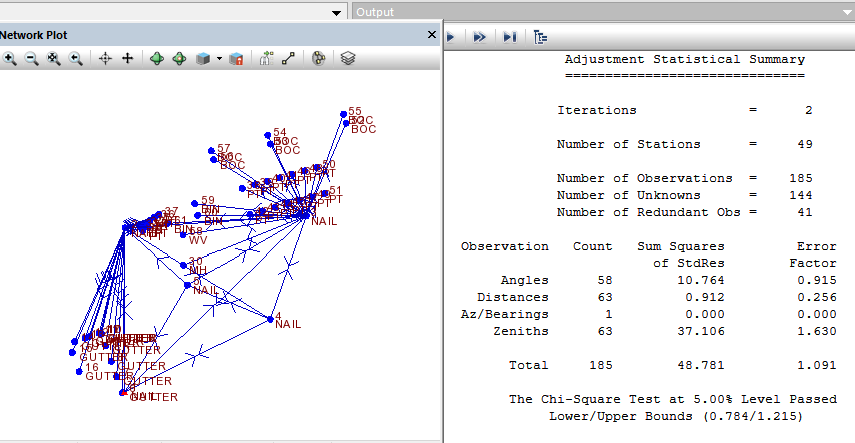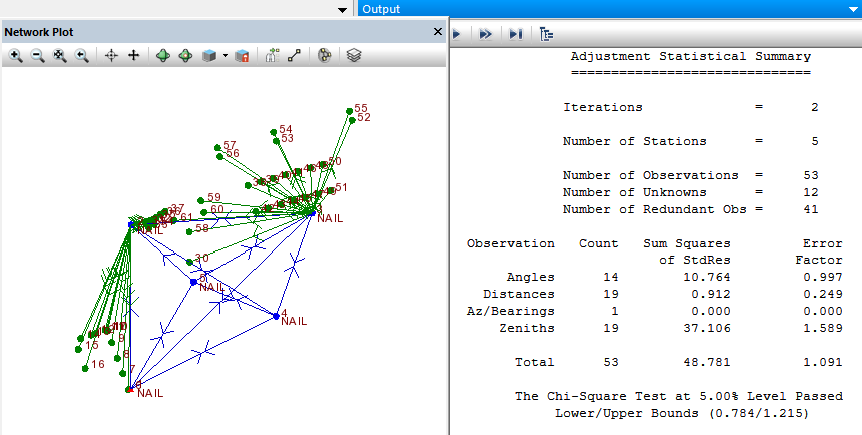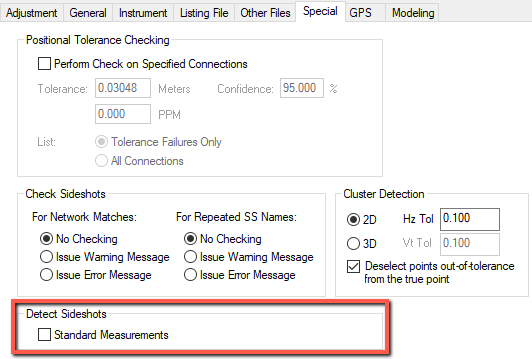With the release of STAR*NET 11, some users have noted a change in behaviour when creating new projects with conventional data. Measurements are being classified as Sideshots and not listed the same way as in the past. In this article we'll introduce you to a not-so-new feature called "Sideshot detect" and explain its history and benefit:
Since the early days of STAR*NET, operators have known that they can input Angle and distance measurements as either M lines, or SS lines:
2D M Line format:
AT-FROM-TO Angle Distance
2D SS Line Format:
AT-FROM-TO Angle Distance
The formatting is the same, but the application of these two measurement types is different. M lines are meant for observations that are part of a network and will be used to compute stations which you expect will be observed from other stations to increase the redundancy in the network. SS lines, on the other hand, are meant for observations to stations that are only observed once, so are not considered part of a network.
Advantages of using SS lines when appropriate:
- The network plot is "decluttered" if you turn off the option to display conventional sideshots
- The total count of knowns and unknowns is reduced in the statistical summary, leading to a better degrees of freedom value and tidier listing
- While the overall error factor will be unchanged, individual measurement type error factors will be more accurately distributed
- In the listing and points list, sideshots will be displayed in a separate section, with more significant control points being displayed at the top of the points list
Using M Lines Only:
Using SS Lines where Appropriate (SS Measurements are shown in Green and can be hidden):
A History lesson of Sideshot Entry:
In the 80s and 90s Starnet was distributed by Starplus software. Users most commonly manually entered data, and found that defining non-redundant measurements as SS lines saved computing time and had the benefits listed above.
In time, Starplus software began developing converters for customers to automate preparing input data. Algorithms were included to allow classification of measurements that created a station that was only referenced once as sideshots and thus write the record as an SS line. These algorithms weren't offered in all converters but were popular when available.
After acquiring Starplus software and the STAR*NET product in 2010, MicroSurvey has continued developing converters and other software companies have offered options to export data to STAR*NET. The option to automate SS classification has been added to many.
With the release of STAR*NET 10, a new feature was developed in STAR*NET that made it unnecessary to explicitly write input data as sideshot. STAR*NET now has an option in:
Project Settings | Special | Detect Sideshots: Standard Measurements.
When this option is selected, all M lines that create a station that is only referenced once will be classified as sideshots regardless the record type that was used in the input file:
With the release of STAR*NET 11, this useful feature has been set to "on" by default. The roll out of this feature has been smooth, but a few users have noticed how measurements are re-classified and been in touch with support. We're happy to explain the feature and describe how to enable the display of sideshots in the plot as well as how to disable the feature in the "Special" tab if necessary.



James Johnston
Comments